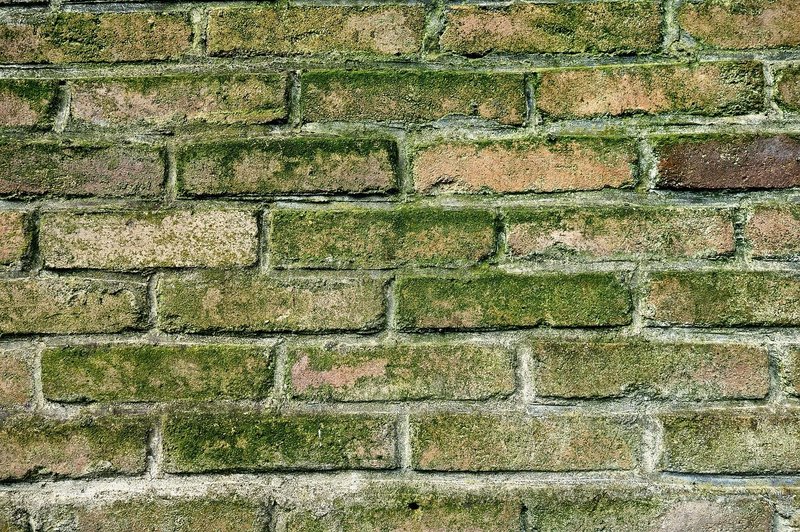When dealing with mold, you may wonder what causes green mold. After all, it is one of the most common types of mold, and knowing the causes will help prevent it in the future.
Green mold can grow in places rich in moisture and can spread from mold spores from rotting food. Let’s explore this further with an in-depth overview of everything you need to know about green mold.

What Is Green Mold And What Causes It?
Green mold isn’t a specific kind of mold, but it covers different types of fungi that appear green. The most common types of said fungi are Penicillium, Cladosporium, and Aspergillus. Let’s break down what these are exactly.
Penicillium appears in blue-green shades. It grows in cooler environments such as soil but can also develop in moist objects in the home.
Cladosporium looks olive green and usually grows on plants. It can sometimes grow on surfaces such as the little nooks and crannies in the cabinets, on the walls, or even spread on your carpet.
Aspergillus usually grows on spoiled food such as rotting bread. It can also grow in very damp places. Your basement could make for prime breeding grown for this type of fungus.
It’s important to note that these fungi don’t always appear in shades of green. They may also appear blue or black.
Moreover, one thing you should know about mold is that it releases spores that could land on suitable places for its growth. The spores may come from the outside and enter your home.
If the spores settle in places with lots of moisture and barely any light, it can cause mold to grow in those areas.
Green mold can manifest this way as well. They can release spores into the air from their primary sources, so be mindful of places like sinks, showers, air conditioners, or any other areas prone to moisture. If you want to know more about mold spores, we’ve got a handy guide about the longevity of mold spores for you.
How Does Green Mold Affect Your Home?
Mold can cause various problems for your health. To summarize, mold spores can affect air quality, giving you and your fellow household members various breathing problems or allergies.
Mold allergies could cause symptoms such as coughs, watery eyes, and runny noses. People with asthma are more prone to experiencing these symptoms when mold is present somewhere. Be aware, though, that these symptoms can still possibly affect everyone in the household.
Even your skin could be susceptible to allergies. The spores landing on your skin can cause rashes.
Some cases may lead to conditions such as psoriasis. Fatigue or dizziness can also be an effect of mold present in the home.
If you notice these symptoms are not a problem when leaving the house, that’s a tell-tale sign that you have green mold or any mold at home, for that matter.
How Do You Deal With Green Mold?
The first thing to do is to check for signs of mold. If you’re sure there’s mold in your home, you should start looking for sources where it may grow in areas prone to moisture.
Fix leaks in your pipes around sinks, showers, washing machines, and bathtubs to prevent water damage that could accelerate mold growth.
Make sure also to wipe any spills, even if they’re superficial water stains. If there are easily detectable molds, you can try to get rid of visible ones yourself in several ways.
One of the products you can use is chlorine bleach. Still, you can use DIY home remedies like vinegar, hydrogen peroxide, or baking soda.
With baking soda, you can mix one-half baking soda and one-half water. Spray the mixture on the mold and leave it there for 10 minutes. You can wipe it all away with a wet sponge.
When using hydrogen peroxide, look for a bottle that contains a three percent solution. Like baking soda, you can leave it there for 10 minutes and wipe it away. Take note that you should only use this method on surfaces that won’t get discolored.
Moreover, you can mix vinegar and water and spray the solution. Unlike the previous two methods, you may have to wait for an hour for this one before you wipe it away.
Even if you get rid of visible mold, there may be mold in the little nooks and crannies you can’t reach. If you can, you may call in a professional to thoroughly inspect any trace of mold you may not easily spot.
To prevent mold in the future, you may also want to purchase a dehumidifier. Mold also grows in high humidity, so keeping your humidity levels low is imperative for mold prevention. A dehumidifier may not kill mold, but it can prevent mold from developing somewhere in the house.
Conclusion
Mold can be a health hazard and affect the condition of your home. That’s why it’s important to know what causes green mold and how you can deal with it. Now that we’ve gone over it, you can be confident that you’ll know how to maintain a healthy home better.

Although many species of mold can grow green, the most common are Cladosporium, Aspergillus, and Penicillium. Aspergillus is the mold that typically grows on spoiled food like bread. It can also grow on nutrient-poor but moisture-rich environments like the basement.
Regards,
Bonnie | FDP Mold Remediation